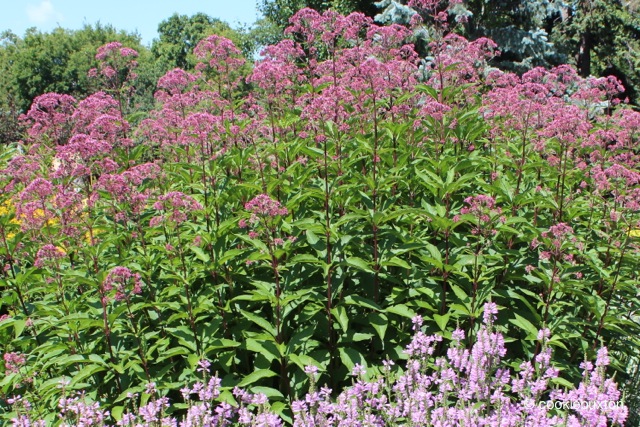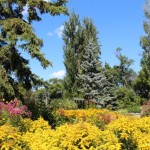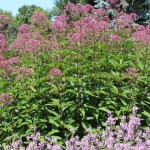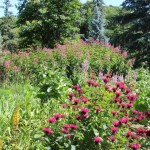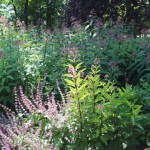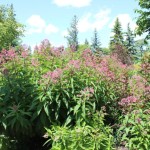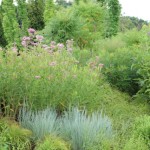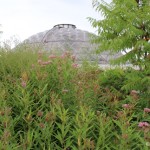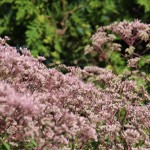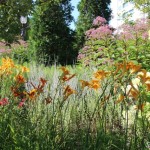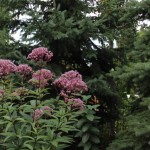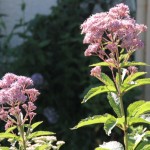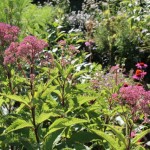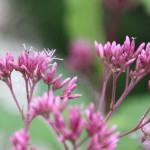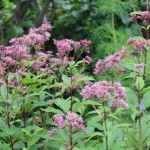Joe Pye
Joe Pye (Eutrochium purpureum).
Joe Pye ranks high among memorable plants for its stately appearance in the late summer and its ability to have a dramatic impact in gardens of all sizes. Some of us love it for the height of the plant and size of the flowerhead, others for its usefulness, its cold-hardiness and reliability year after year, or some appealing aspect such as its light vanilla scent or lovely colour. Joe Pye, known by a variety of names such as Queen of the Meadow, Gravel Root, and Boneset, certainly has its appealing qualities.
A tall, native North American wildflower, Joe Pye likes sunshine or partly-sunny conditions and it prefers moist soil, in which it sets down deep roots. While there are “Little Joes” to be found in the nurseries, it is the tall native species that is the real crowd pleaser. The common names for Joe Pye include Joe Pye Weed, Sweet Joe Pye Weed, Boneset, Purple Boneset, Feverweed, Mistflower, Queen of the Meadow, Gravel Root, Trumpet Weed, and Kidney-root.
Depending upon the soil and overall situation, Joe Pye reaches a height ranging between one metre to three metres tall (three to 10 feet). Seeing these plants massed together, one can imagine how they would have looked in their original setting in the tall-grass prairie landscape.
The plant’s light pink-mauve flowers are small and not particularly impressive when seen up close, yet the large clusters of flowers look striking from a distance.
Besides being an attractive addition to the meadow garden, back of the perennial border, or middle of an island bed, the plant is an important late-season food source for butterflies, bees, and other nectar-seeking insects.
Research on the naming of the plant will lead you to a number of conflicting articles online. According to some diligent researchers, however, the man after whom botanists named the plant was probably a Mohegan chief (sachem) who lived in western Massachusetts and who had the knowledge and skills of a native healer or medicine man. The gentleman is credited with helping people recover from typhus fever using a tea likely made from the roots of “Joe Pye’s weed.”
Articles relating to the naming of the plant:
http://www.prairieworksinc.com/2010/11/15/joe-pye-the-name-behind-the-legend/
Copyright Photos and Text: Nadine Kampen / Cookie Buxton
Photo locations: English Garden at Assiniboine Park, Winnipeg; Botanical Gardens in Des Moines, Iowa; home garden of friends Gina and Paul; NK home garden
Photo Gallery
Click on any image to enlarge, and click on the enlarged photograph to advance through the series.
